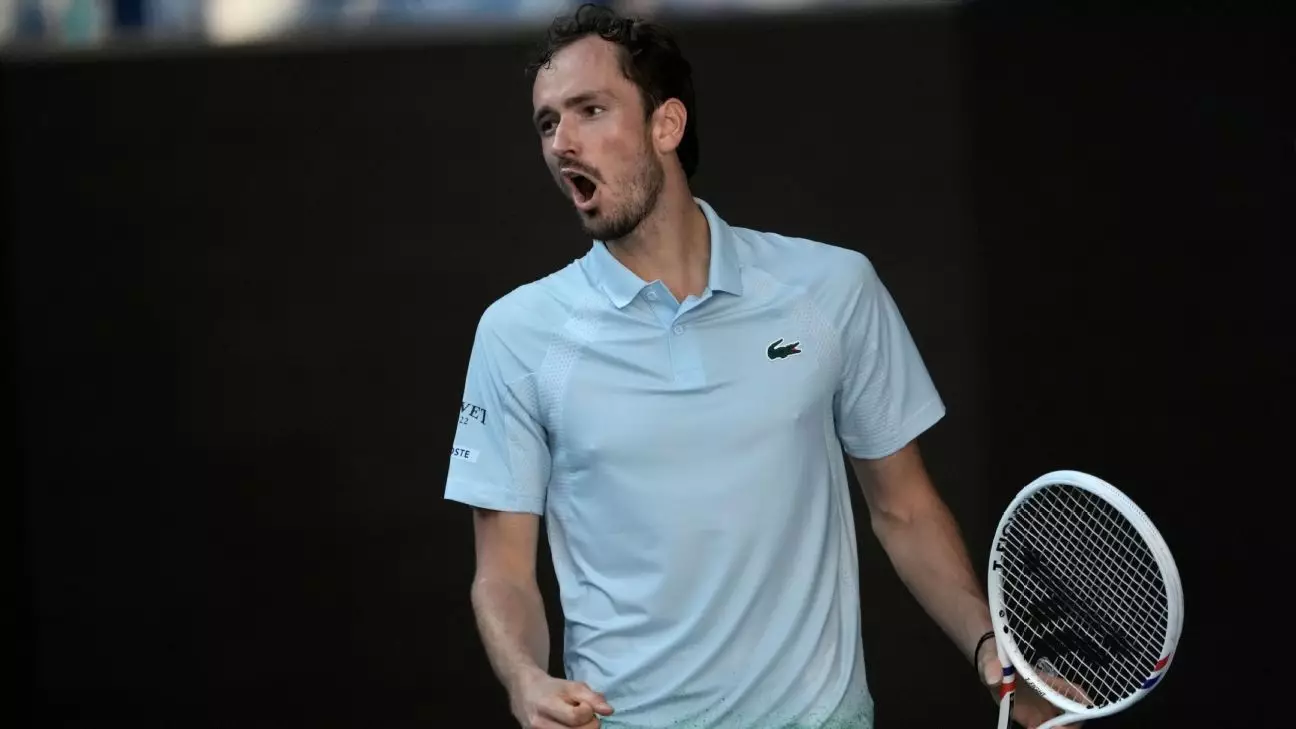Daniil Medvedev’s opening match at the Australian Open 2025 was more than just a step into the tournament; it was a test of his character and resilience. Despite being a seasoned player with significant accolades, including a hard-fought title at the 2021 US Open and multiple final appearances at Melbourne Park, things did not begin smoothly for the fifth-seeded Russian. Facing off against Thailand’s Kasidit Samrej, who was making his Grand Slam debut and held a ranking of 418, Medvedev found himself in an unexpected battle that turned into a spectacle of both athletic prowess and surprising frustrations.
Medvedev’s frustrations reached a peak during the third set, where, after losing an intense rally, he violently smashed his racket against a camera that was recording the match. This outburst not only drew a hearty gasp from the audience at Rod Laver Arena but also earned him a warning for racket abuse from the chair umpire. The rebellion against his equipment served as a metaphor for the turmoil swirling within him. Notably, this was a defining moment; it showcased the pressures athletes face, particularly when pitted against lesser-known opponents who unexpectedly rise to the occasion.
Medvedev’s previous experiences at this tournament certainly contributed to his initial struggles. Although he had relocated into a potentially manageable match, the added weight of expectations, combined with the unyielding spirit exhibited by his opponent, proved to be challenging. When a player of Medvedev’s caliber finds himself trailing an unknown wild-card competitor, the mental game shifts dramatically.
After losing the third set, which gave Samrej a fleeting sense of control by leading our wild fifth seeding victor, Medvedev managed to reclaim focus and bounce back remarkably. The fourth and fifth sets transitioned into a display of sheer dominance, reflecting Medvedev’s unwavering ability to adapt under pressure. By claiming 12 out of the last 15 games, he sent a clear message, reaffirming his status among the elite players on tour. The score of 6-2, 4-6, 3-6, 6-1, 6-2 highlighted not only his skill set but also his mental fortitude.
Of particular note were Medvedev’s statistics post-comeback; he unleashed 24 aces and displayed strategic efficiency by accumulating significantly fewer unforced errors in comparison to Samrej, with counts of 34 versus 69. Such data speaks volumes about the maturity and preparedness of a player who understands what it takes to emerge victorious, even when the odds seem stacked against him.
Samrej’s journey to this match is equally compelling. He had never competed against anyone ranked higher than 78th and had gone through four qualifying rounds to earn his spot in this prestigious event. His initial performance possessed a raw tenacity that left spectators and Medvedev alike stunned. As he sought to become the lowest-ranked male player to oust one of the top five seeds since the inception of the ATP computerized rankings, the stakes were undeniably high.
Injuries, however, began to manifest as the match progressed, with Samrej receiving treatment late in the fourth set due to discomfort in his left leg. Despite the physical setback, his determination shone through; it was an inspiring presentation of a player rising to the occasion, sending ripples of excitement throughout the arena.
After the match, Medvedev’s reflections highlighted an evolution from a previous season—an acknowledgment that in his January encounters of the prior year, he might have faltered against such an adversary. His testimony not only indicates his growth but also emphasizes the cyclical nature of tennis; where yesterday’s adversities become today’s experiences, shaping the champions of tomorrow. As he quipped about needing “a minimum of three hours” to find the groove, it was a gentle reminder of how practice, resilience, and emotional control are pivotal in the highly competitive landscape of professional tennis.
Medvedev’s victory secured him a place in the next round of the Australian Open, but more significantly, it provided him with an invaluable lesson in mental strength and adaptation—qualities that will serve him well as the tournament unfolds.

